Preserving History
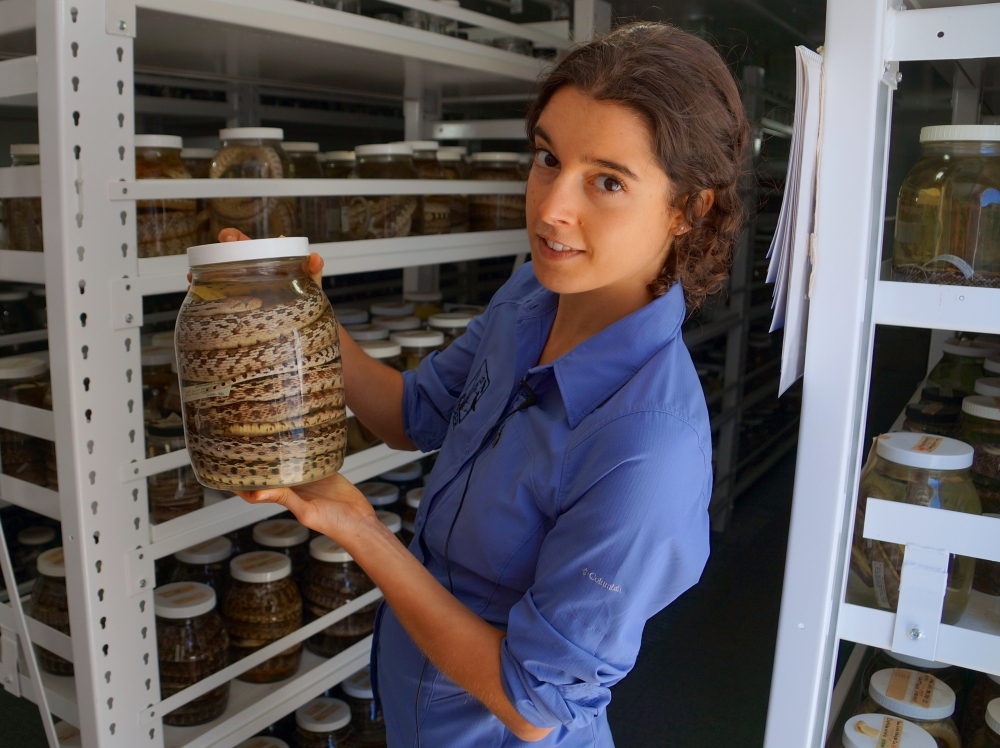
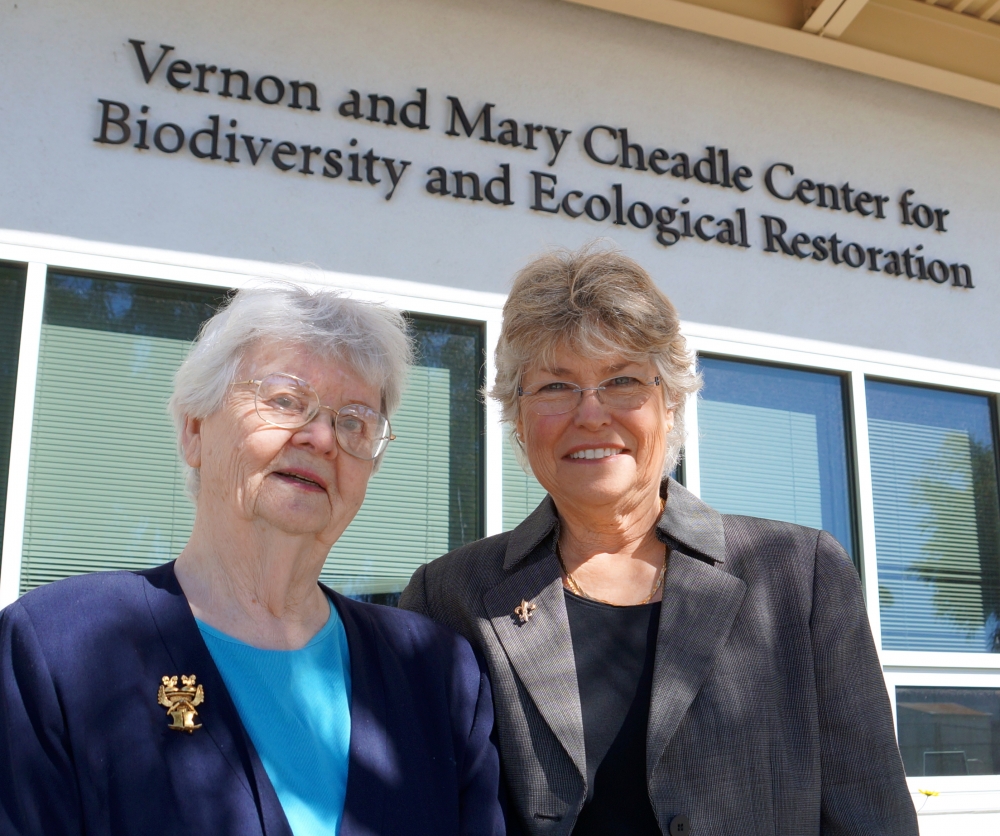
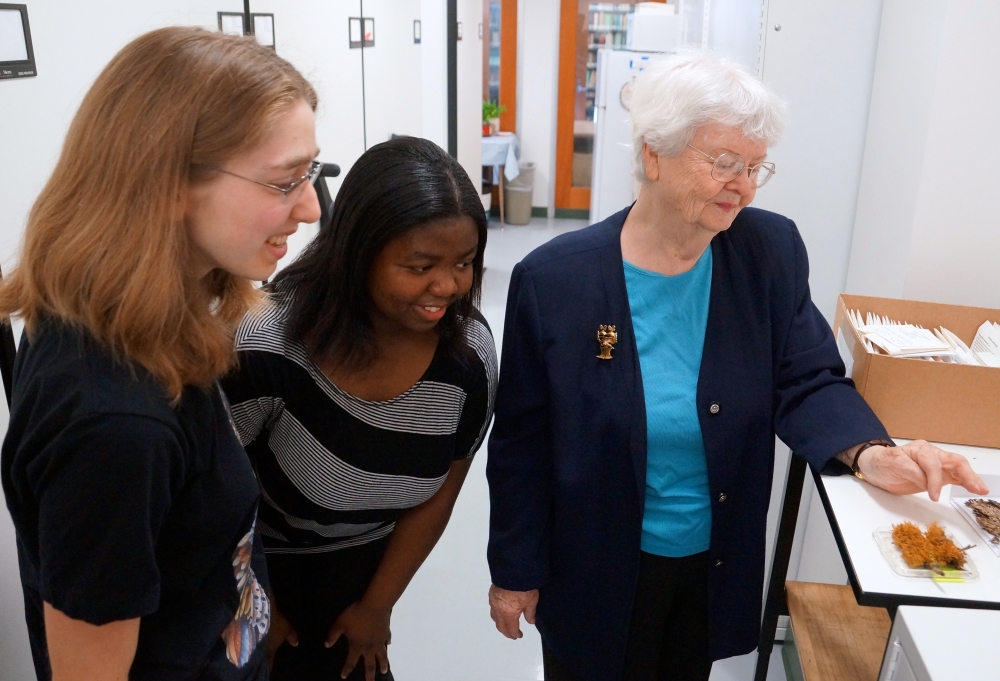
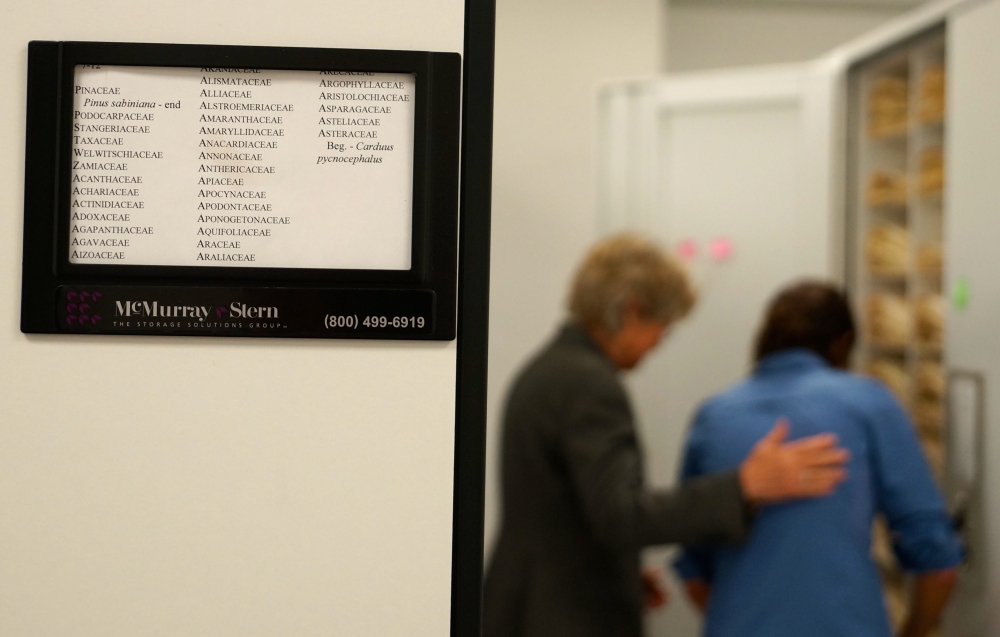
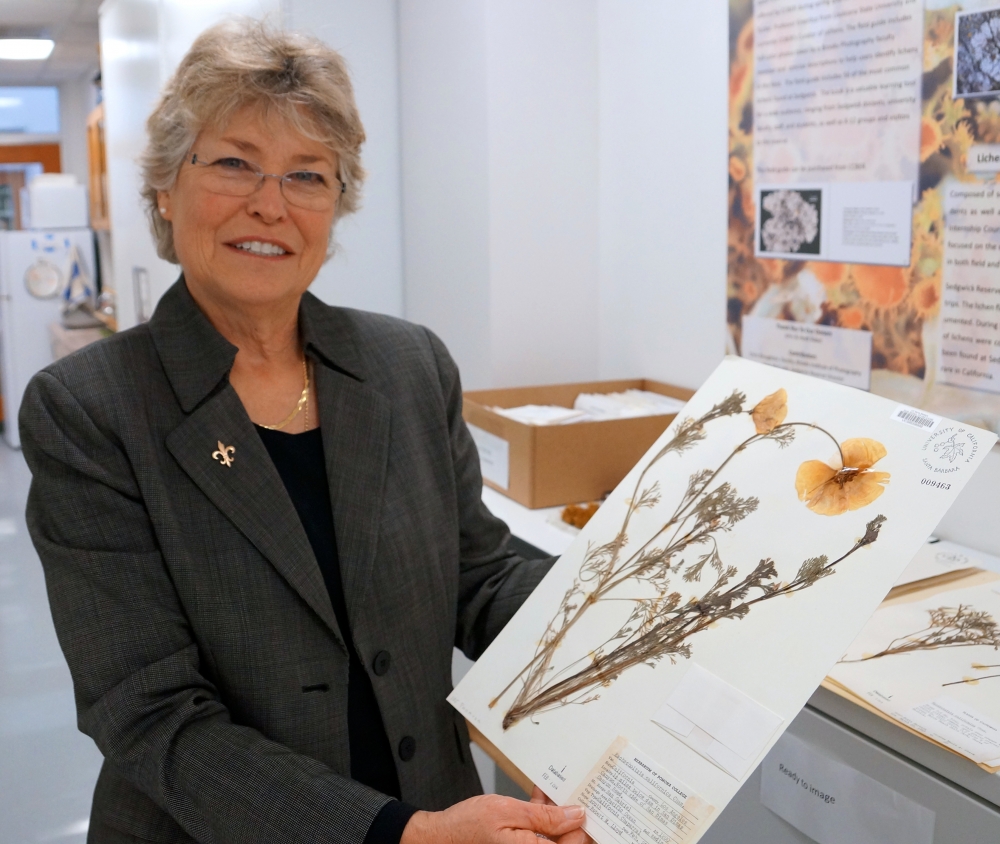
Odds are it’s not often that someone delivers a skunk carcass to your office because they think you could use it. And even less so — let’s just say never — that you’re asked to assume care of a taxidermied armadillo holding a beer can in its claw.
But such requests are decidedly de rigeur for Mireia Beas-Moix. The eclectic is the everyday when you’re the curator and custodian of some half-million scientific specimens — from bugs to bear pelts, algae to arthropods, flora to fauna, skulls to snakes and exactly one stuffed armadillo.
Museum scientist Beas-Moix manages the natural history collections at UC Santa Barbara’s Cheadle Center for Biodiversity and Ecological Restoration (CCBER), the glorious biological goldmine situated beneath the bleachers of Harder Stadium. Overseeing collections in zoology, botany and plant anatomy, plus hosting and teaching classes, to name only a few of her duties, Beas-Moix keeps busy.
And that’s just the way she likes it.
“Having such a broad variety of tasks is the most exciting part of my job — every day it’s something different,” said Beas-Moix, of Barcelona, Spain, who joined UCSB after earning her graduate degree in museum studies from the University of Kansas. “And the fact that we’re able to do this for the university, to do something that you see has an impact and makes a difference — it’s fantastic.”
Also fantastic: the generous new gift that ensures Beas-Moix will be around a while. Shirley Tucker, a retired botanist and plant anatomist who once studied with center namesake Vernon Cheadle, has donated $240,000 to fund, for three years, the position now known as CCBER’s Tucker Collections Manager.
“CCBER has historic significance and importance for the future,” said longtime supporter Tucker, who has been active with the center since it opened, and has made multiple gifts with her husband, Ken Tucker. “Ecologists really rely on plant systematics — the science behind herbaria — to be sure what species they’re working on. And because it’s a storehouse of plants that have been collected over a long period of time, one can get data about blooming times, for example, which right now are being used as evidence for global warming.
“So keeping the herbarium well-maintained is crucial,” continued Tucker, who launched and still curates CCBER’s collection of local and regional lichens. “And CCBER holds so many other collections that are going to be increasingly important.”
All of which makes diligent and delicate management of those collections ever-more essential, according to Tucker, who said her new gift was as motivated by that very belief as it was by her longtime connection to CCBER.
Tucker took classes from former chancellor Cheadle during her doctoral studies at UC Davis, where he was a faculty member before joining UCSB. She went on to spend 30 years as a professor at Louisiana State University before retiring to her husband’s hometown of Santa Barbara. Hoping to continue her research, Tucker wrote to Cheadle and asked if he’d allow her some space in his lab at UCSB. He happily agreed, but unfortunately passed away before she could begin.
Enter Jennifer Thorsch, CCBER’s Katherine Esau Director, who at that time was running Cheadle’s campus lab. She welcomed Shirley Tucker with open arms. That was more than 20 years ago. Besides their common background in botany, the two share a passion for natural history at large and a mutual belief in the importance of preserving it.
“Shirley’s gift is a fantastic boon for CCBER and our natural history collections,” Thorsch said. “While many institutions across the U.S. have gotten rid of their natural history collections, we are very fortunate here at UCSB because ours have remained. What’s really special about that, and makes me really proud, is that our students are actually seeing and handling real specimens. Online is great, but there is nothing like being able to have that great horned owl right in front of you to really see size and dimension and coloration and really feel that specimen. See the talons, see the beaks.
“One of my major goals for CCBER has always been to upgrade and curate the collections to make them accessible to researchers, scientists, faculty, students and interested community members not only here, but on a worldwide basis,” added Thorsch, who in her tenure so far has overseen the digitization of more than 100,000 plant and animal specimens, and plans for much more. “An outstanding collections manager who can balance a lot simultaneously and keep our collections moving along — digitizing, databasing, making sure they are being properly curated and maintained — is vital to our organization.”
That’s exactly what she’s found in the gregarious, engaging multitasking master Beas-Moix, who at any given time might be preparing a specimen for one of the collections, responding to a researcher’s request to borrow specimens or teaching a class on vertebrate collections. Or overseeing interns and student workers. Or hosting the latest weekly meeting of the Natural History Collections Club, which she founded last year. Or providing support for myriad courses across campus.
You get the picture.
“Mireia is an outstanding employee who does her job at 120 percent,” said Thorsch. “We are very lucky to have her — and so grateful that Shirley Tucker’s gift will allow us to keep her here.”
For Beas-Moix, a onetime biology major who said she felt academically rudderless until she discovered natural history, the drive and dedication she applies to her efforts at CCBER are just byproducts of her passion for the work. It’s a passion she hopes to pay forward.
“During my undergraduate studies in Barcelona, I did an internship, randomly, with a natural history museum where I worked in collections — and I fell in love and just knew that’s what I wanted to do with my life,” she recalled. “Now being here at UCSB and working in this field, working with students and maybe inspiring them the way I was inspired — maybe changing someone’s life like mine was changed — this is amazing. The students that I work with, I tell them all the time to fight for your dreams and do what you are passionate about. If you do the work that you really enjoy, you will get far.”



